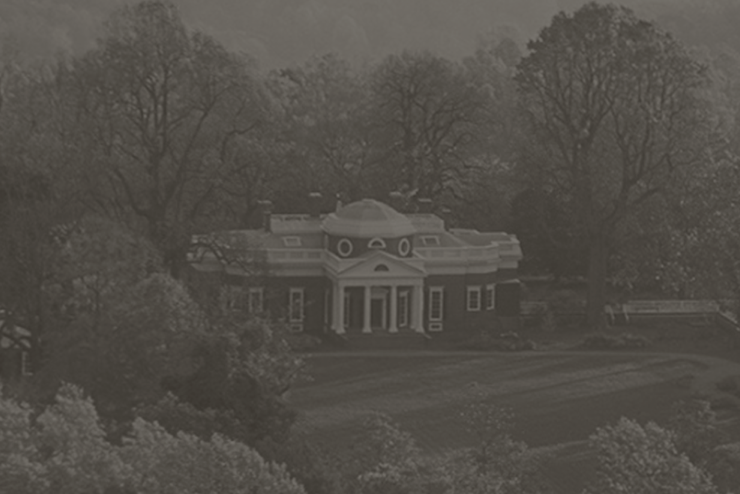
Archaeology on Mulberry Row—A Little History: Part 1
Everyone knows that archaeologists dig. But it is less widely appreciated that just how they dig and what they find varies with the kinds of questions they ask and the assumptions they make. Two excavation campaigns were conducted on Mulberry Row -- the first in 1957 and the second in the early 1980’s – and the differences between them offer thought-provoking insights. In this series of three blog posts, I’ll describe these two campaigns and their analytical implications.
The first serious archaeological fieldwork on Mulberry Row was undertaken in the summer of 1957 by Oriel Pi-Sunyer, then a graduate student in anthropology at Harvard. The basic excavation method that Pi-Sunyer used is called cross trenching. The idea is to dig a series of long, parallel trenches, spaced at regular intervals, in hopes than that they might intersect a masonry wall. Once that happens, the excavators follow the walls, exposing them and sometimes the entire interior of the structure that they surrounded as well. This is the excavation technique employed at Colonial Williamsburg in the 1930’s though the 1950’s when the digging was done, not by trained archaeologists, but by architects and landscape architects who were looking for house foundations and garden walls.
Pi Sunyer’s work at Monticello was limited to the western half of Mulberry Row. At the time, most of the eastern half was paved for visitor parking. He dug two long, trenches about ten feet apart, paralleling the south side of Mulberry Row. The trenches were designed to intersect the walls of buildings that lined Mulberry Row. Pi-Sunyer found three buried structures in this way. All three are shown on a plat of Mulberry Row that Jefferson drew in 1796, for an insurance policy on the principal buildings on the mountaintop, including the main house. See a copy of the plat.
Pi-Sunyer used the plat and Jefferson’s descriptions of the structures on it to identify the functions of the three structures. They included a blacksmith’s and nailer’s shop (which Jefferson designated Building D on the plat), a long shed that that was to be added to it (Building j), and a “store house for nailrod and other iron” (Building l). Pi-Sunyer also cleared the floor of the joinery, whose fallen walls are still visible above ground. Finally, he trenched around the partially standing walls of a stone building that did not appear on the 1796 insurance plat, because, as Pi-Sunyer correctly guessed, it was built in the early nineteenth century. Today this building is referred to as the 1809 stone house, after the documented year of its construction as a slave house. Given the focus on finding walls and identifying buildings using documents, it makes sense that Pi-Sunyer paid scant attention to stratigraphic layers, which artifacts came from which layers, or where within a structure or outside it the artifacts and the layers were recovered.
This photo from 1957, looking west down Mulberry Row, shows Pi-Sunyer’s two long cross trenches. Mulberry Row is on the right. The brick paving, which Pi-Sunyer located in his trenches and then uncovered, is the remains of the structure that Jefferson labeled “Building l ” on the 1796 insurance plat and described as a “storehouse for nailrod and other iron”.
Over twenty years later, William Kelso brought a different set of field techniques to his work on Mulberry Row. They will be the subject of the next post.


